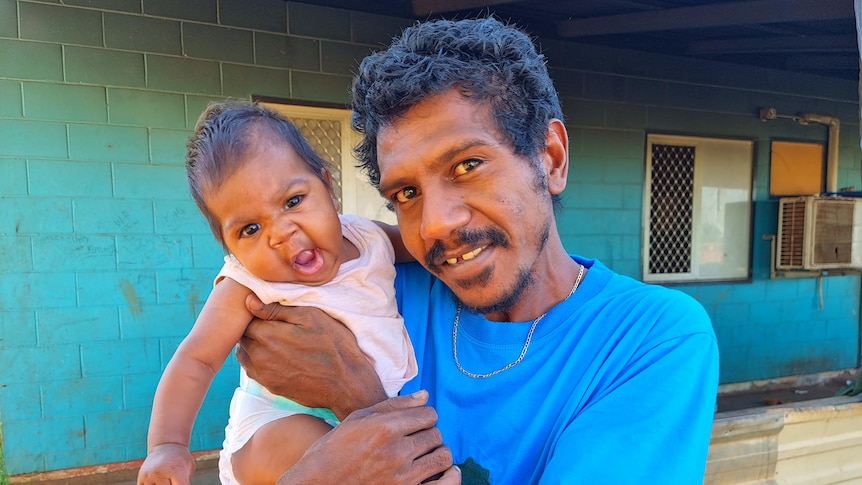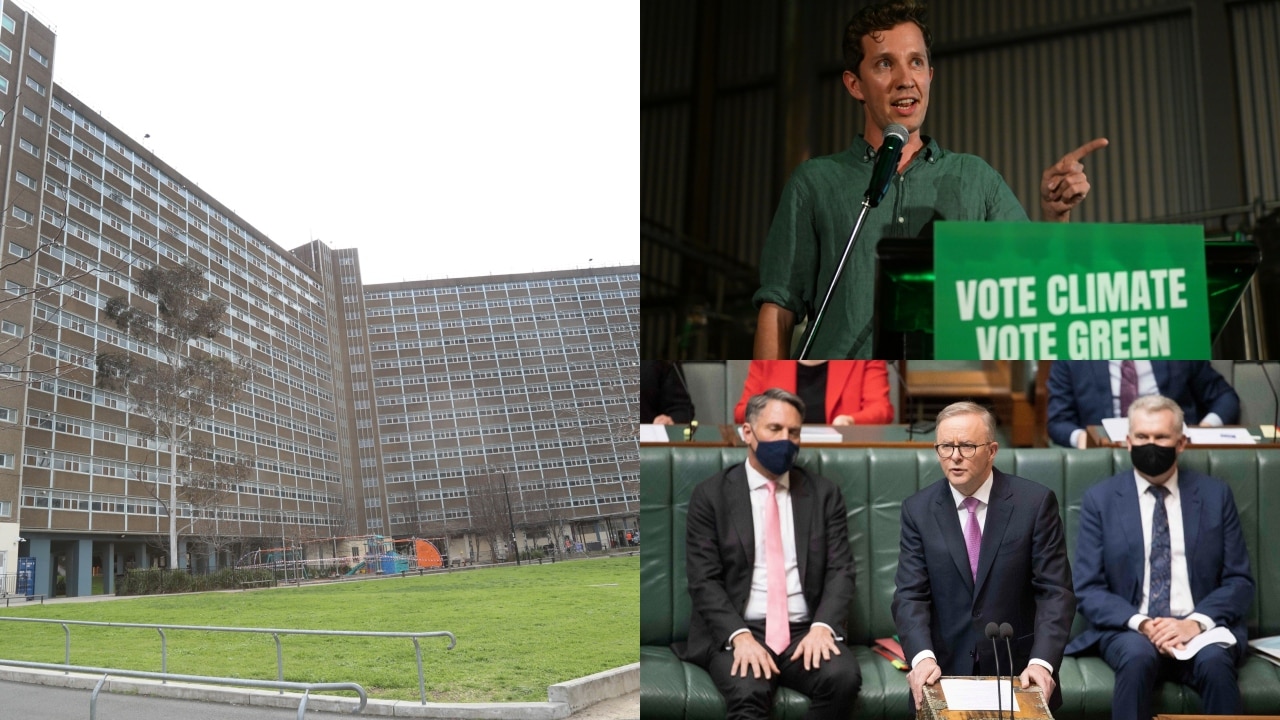Legal advocates say the Northern Territory government has “quietly” wiped $70 million worth of rental debt allegedly owed by remote residents who didn’t know the debt existed.
Key points:
- The government has not formally announced the debt waiver and it comes as rents are set to rise
- Lawyer Dan Kelly says the saga is evidence remote housing in the NT “isn’t working”
- The NT has been embroiled in years-long legal battles over the state of remote housing
The existence of the alleged debt came to light when the Santa Teresa community sued the NT Department of Housing for providing uninhabitable housing stock.
In 2016 the government announced it would countersue the residents taking legal action against them, claiming individual households owed up to $21,000 to the department in unpaid rent.
Australian Lawyers for Remote Aboriginal Rights solicitor Dan Kelly represents the Santa Teresa community and said this alleged debt came “out of nowhere” for residents.
“It was obviously very worrying and distressing,” he said.
“They were under the impression they had been paying their rent as instructed through direct debits.”
Freedom-of-information requests revealed the Territory government alleged the community owed a total of $2 million in unpaid rent but had never pursued the debts.
Debt waiver not publicized
Mr Kelly said the wiping of the alleged debt only came to light because a similar countersuit taken out by the government against residents for Laramba was suddenly dropped early this month at the NT Civil and Administrative Tribunal (NTCAT).
Since 2018, Laramba’s residents have been engaged in legal action against the Department of Housing, arguing they have a right to safe drinking water following revelations theirs contains three times the recommended levels of uranium.
“They announced to the court that the Treasurer has made a determination under the Financial Management Act waiving or writing off any alleged debts,” Mr Kelly said.
“That’s essentially all we know.”
NTCAT heard the decision to wipe the alleged debt was made at the end of June.
In a statement, the government said renters were visited by tenancy officers to advise them historical rental debt up to December 11, 2021 would not be pursued.
The decision to wipe $70 million worth of debt has not been otherwise publicized by the government.
‘Failure system’
Mr Kelly said the government’s countersuit against Santa Teresa residents was eventually unsuccessful because “records were unable to support the fact that the amount was in fact owing”.
Wiping these debts means the government can no longer countersue residents who take them to court in this same way, but Mr Kelly said based on the outcome of the Santa Teresa countersuit, it was “questionable” if any debts would have been probable.
“Their records, I think, have been proven to be unreliable.”
In a statement, the government said the rental system was “antiquated” and “ineffective, confusing for tenants and challenging to administer”.
Mr Kelly said the saga surrounding the unpursued and unproven debts was indicative that remote housing policy was “failing” in the NT.
“It’s a policy that failed because Aboriginal-controlled organizations were not part of the conversation and Aboriginal voices weren’t involved in the policy.
“This was money that should have been fixing up houses and making sure they were at a reasonable and comfortable standard.”
Debt forgiven as rent is raised
The decision to waive the alleged debt comes as the government plans to increase rents for many residents in remote communities and town camps as part of the new remote rent framework.
On September 5 the government will abolish income-based rent setting for these properties and introduce pricing schemes that researchers from the Australian National University found would in turn increase rent for 68 per cent of tenants.
The researchers found rent would increase for 80 per cent of renters in Central Australia and 81 per cent of residents in the Barkly.
“Our view on the new rent system is that it’s not going to work again — it’s been designed without the adequate input of Aboriginal organisations,” Mr Kelly said.
In a statement, the Department of Territory Families, Housing and Communities said the new framework was “simple” and “has built-in safeguards to protect people from rental stress should the rent tenants pay exceed 25 per cent of household income”.
“Consultation on the Remote Rent Framework began in 2018 with key stakeholders including a working group with leaders from the housing sector,” it said.
“Tenancy officers have gone door to door across more than 80 communities to provide information to tenants about the new framework.”
.


